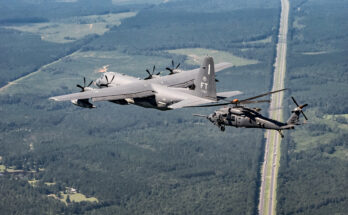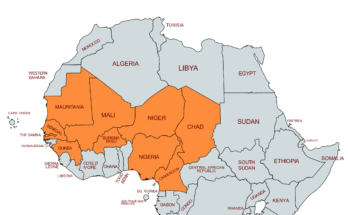As 2022 draws to a close, the European defense environment has shifted as dramatically as at any time since the end of the Cold War.
Beginning with the launch of Russia’s invasion of Ukraine on February 24, Europe witnessed the return of high-intensity, industrial-scale warfare to the continent.
The outbreak of conflict sent shockwaves across Europe, rallying governments and their citizens to the Ukrainian cause from the opening shots and missile salvoes of the invasion. It also resulted in deep introspection among many European nations that for three decades had under-resourced their defense capabilities.
As European publics were fed daily news showing Ukrainian cities bombed and citizens huddled in underground shelters, governments from the Baltics to Britain to Scandinavia began reassessing their own spending practices, defense inventories, and general military capabilities.
Long-term plans to raise defense budgets up to 1.5 percent or 2 percent of GDP (depending on the nation and the enthusiasm of the government in power) by 2025 – or 2030, or 2033, or whenever governments felt like getting around to it – soon gave way to calls for expedited spending plans, larger force structures, and accelerated modernization programs.
Military aid and financial support for the Ukrainian resistance efforts grew throughout the year until the total level of funding received by the government in Kyiv quite literally outpaced the annual defense expenditures of every other nation in Europe save for four (Britain, France, Germany, and Italy).
$13.7 billion in direct military aid to Ukraine by the U.S. so far this year. If valued stand-alone that total would place Ukraine as the 5th-largest defense spender in Europe for 2022, behind 🇬🇧🇫🇷🇩🇪🇮🇹 and ahead of 🇵🇱 depending on the daily exchange rate. https://t.co/b0VjcNf1cR
— Dan Darling (@DanielRDarling) August 24, 2022
The sudden shift in prioritization of defense within a six-month period was for Europe, quite simply, stunning.
Looking back over the past year, the major defense- and security-related themes emerging in Europe were:
- An increase in defense spending commitments across all NATO-Europe member states, as well as many outside the trans-Atlantic Alliance but within the European Union (Austria, Finland, and Sweden). These include Poland’s commitment to push its national defense budget up to 3 percent of GDP in 2023 and Finland and Sweden targeting the NATO minimum standard of annual defense budgets equal to 2 percent of GDP.
- Finland and Sweden both opting to abandon their respective long-standing non-military-aligned statuses and apply for membership in the NATO Alliance. If Vladimir Putin’s invasion did nothing else, it reshaped the entire Scandinavian Peninsula’s defense posture within a single year.
- The former Warsaw Pact countries emptying their Cold War-era, Russian-designed military inventories by donating them en masse to the Ukrainian armed forces. This included everything from small arms and anti-tank missiles to air defense systems, armored vehicles, and helicopters. By clearing out aging inventories, NATO members such as the Czech Republic, Estonia, Latvia, Poland, and Slovakia removed equipment already slated for retirement in the near- to mid-term, thereby expediting their respective national military modernization plans.
- A severing of ties with Russia and its second-order effects. Europe was already straining from a slowing economic environment and high inflation as it began 2022, but EU sanctions imposed on Moscow to punish it for its invasion of Ukraine by slashing Russian energy inflows have had a chilling effect – literally and figuratively – on its power grid and financial markets. Add it all up and Europe confronts the possibility of a sharp recession and growing public unease with national leadership.
- Related to number three above, the knock-on effect of sending secondhand Russian-designed hardware to Ukraine, with the donor countries created capability voids in the process. These gaps now require the backfilling of capabilities on a compressed timeline, further creating defense industrial pressures already strained by increased demand and a lean production/just-in-time delivery model no longer practical in the current environment. In some instances, such gaps are backfilled by NATO allies donating their own used equipment, but in others the pent-up demand has forced some countries to look beyond NATO-sourced equipment. This proved the case with Poland when it opted for South Korean K239 Chunmoo multiple launch rocket systems (MLRS) to meet an immediate requirement at high volume.
Now with 2022 fast fading into the rearview, here are just a few things to watch for in the coming year:
- The impact of inflation on defense. With defense inflation normally higher than consumer inflation, the problem of modernizing armed forces on still-lean budgets weighted heavily in favor of personnel/maintenance/operations over capitalization becomes tricky. Yes, some defense ministries are suddenly infused with cash on hand, but the defense inflationary cycle – exacerbated by higher energy costs, brittle supply chains, and production bottlenecks – will drive unit prices further upward and hinder buying power.
- Debt and deficit pressures. The European Commission is readying changes to the EU fiscal rules, as detailed in the Stability and Growth Pact. These require members to remain at or below a budgetary imbalance of 3 percent of GDP and to maintain debt at or below 60 percent of GDP. While one-time violations are allowed, members are not to exceed these totals for two consecutive years. However, these rules were never enforced. When factoring in the cost of the latest health crisis and COVID-19 pandemic relief packages, the 19-member Eurozone is suddenly staring at government debt of 95 percent of GDP (in quarter two of 2022). Two countries – Greece and Italy – are saddled with debt loads above 150 percent of GDP. With recessionary fears growing, there will likely be a fiscal reckoning on the horizon. How long before governments begin to renege on their commitments to bolster defense budgets? The answer to that question will soon play out across 2023 and 2024.
- Ongoing public support for the war in Ukraine – and for stronger national defense. The biggest question looming in 2023 is how will the war in Ukraine play out? Will there be some form of resolution, or continuous battlefield churn? For now, Russian President Vladimir Putin remains resolute that the invasion will go on and there will be no turning back, which indicates that the war will probably continue through the coming year. So far, European support for providing military aid to Ukraine continues unabated. But if a sharp recession unfolds in the coming year, how much longer do publics continue to support the provision by their governments of financial aid and material to Ukraine and increased defense budgets while fuel and everyday goods continue to cost more? More importantly, if the war should somehow draw to a conclusion in 2023, how strong are the commitments to bolstering national defense going to remain at the political level?
In the past, Europe has never missed a chance to trim militaries and defense budgets whenever national economies have slowed – nor has it missed the chance to do so during boom times, either. The slow but steady erosion of Russia’s military on the Ukrainian battlefront further diminishes the threat to Europe from Moscow, thereby providing the perfect excuse in European capitals to save money and trim deficits through military spending reductions. Is this truly a new dawn for Europe, or will it take the first opportunity presented to revert to the halcyon days of the post-Cold War peace dividend?
There will be much to watch for in Europe in 2023 as the comfortable illusion of Pax Europa fades and the reality of war on the continent brings with it hard choices requiring political willpower.
Dan Darling is Forecast International’s director of military and defense markets. In this role, Dan oversees a team of analysts tasked with covering everything from budgeting to weapons systems to defense electronics and military aerospace. Additionally, for over 17 years Dan has, at various times, authored the International Military Markets reports for Europe, Eurasia, the Middle East and the Asia-Pacific region.
Dan's work has been cited in Defense News, Real Clear Defense, Asian Military Review, Al Jazeera, and Financial Express, among others, and he has also contributed commentary to The Diplomat, The National Interest and World Politics Review. He has been quoted in Arabian Business, the Financial Times, Flight International, The New York Times, Bloomberg and National Defense Magazine.
In addition, Dan has made guest appearances on the online radio show Midrats and on The Media Line, as well as The Red Line Podcast, plus media appearances on France 24 and World Is One News (WION).




